#ant mimic crab spider
Explore tagged Tumblr posts
Photo



Ant-mimic crab spider, Amyciaea forticeps, Thomisidae
Photographed in Singapore by Nicky Bay // Website // Facebook
Shared with permission; do not remove credit or re-post!
#animals#curators on tumblr#bugs#arachnids#spider#crab spider#ant mimic crab spider#mimicry#one nice bug
777 notes
·
View notes
Text







Ground crab spider and baby ant mimic mantis at the insectarium
#invertebrates#invertiblr#inverts#invert#bugblr#mantis#mantid#ant mimic mantis#ground crab spider#crab spider#spider#true spider
17 notes
·
View notes
Text
Blog no.1
Hello to whoever may be reading this! As I mentioned in my last post, I will be posting my first blog on Sunday, which is today. I have thought a little bit about what to post specifically and I decided to blog about insects, and I think that will be the focus of this account.
To start off I want to explain the very basics on this topic. Firstly, the study of insects is called entomology, and secondly, insects are part of the phylum (or group) Arthropoda.
The phylum Arthropoda is the largest phylum in the animal kingdom, and they make up about 84% of all known species of animals. The Arthropoda is commonly divided into 4 subphyla:
Arachnids:
They have 4 pairs of legs, or 8 legs in total. They include spiders, scorpions and ticks.

Crustaceans:
They have a hard exoskeleton and typically live underwater. They include crabs, lobsters and shrimps.

Insects:
They have 3 pairs of legs, or 6 legs in total and a lot of them have wings. They include beetles, moths and butterflies.

Myriapods:
They have many pairs of legs. They include millipedes and centipedes.

Out of all these subphyla, insects are the most abundant and there is estimated to be 10 quintillion insects all over the world, or a ‘10’ followed by 18 zeros, or also about 80% of all known animal species. The most common insects are, unsurprisingly, ants which there are about 20 quadrillion of them, or a ‘20’ with 15 zeros. There are so many ants that there are about 2.5 million ants for every human.
People are usually scared of insects and often find them ugly and disgusting but i do not think that is true. There are many beautiful and unique insects out there. Some of my favorites are:
The flower mantis:
These are a specific species of praying mantises that use a special kind of camouflage, they mimic parts of the orchid flower. They do this to attract prey and to avoid predators.

The domestic silk moth:
They are often used to produce silk from their cocoons. They cannot fly since they have been so genetically modified by humans and so can no longer survive independently in the wild.

The bumblebee:
This is obviously a very common and well-known species. They are important pollinators, and they produce honey.

There are so many more beautiful and unique insects, but I only named a few and described them very briefly, next week maybe I might go into detail on them or maybe on other insects, we’ll see by then.
That’s it for now, I know this blog is kind of short, but I am tired and lazy atm. Sorry for posting so late but I was busy with cleaning and baking, and I sort of forgot to work on this the days before, but next week I hope I will post something longer and maybe even more interesting. That’s it for today, thank you for reading this far!
14 notes
·
View notes
Text
HiB Spider Sisters idea:
I mentioned the 7 Spider Sisters in a few previous HiB sequel/au posts and I had a cool idea of how they'd work, inspired a bit by the 1999/00's cartoon + LMK's spider gang.
Gonna put these lovely ladies in one photo set to reduce arachnophobia.
Sister #1: Black Widow Spider - the leader of sisters. Not the largest but definietly the one with the biggest ego. Based on the Spider Queen
Sister #2: Joro Spider - thin and spindy, and obsessed with her beauty. Likes short men.
Sister #3: Signature Spider - the more bookish of the elder sisters. Enjoys caligraphy and decorating her webs.
Sister #4: Huntsman Spider - Frustrated middle child. Is a pursuit hunter rather than a web weaver. Ends up having a crush on Sha Wujing. Based on the Huntsman from LMK.
Spider #5: Chinese Fawn/Bird Eater - A lazy web maker who nonethless has a massive heart. Based on Goliath/Strong Spider from LMK.
Spider #6: Ant Mimic Crab Spider - An amatuer actress who takes on most of the chores around the home.
Sister #7: Java Yellow Jumping Spider - Youngest sister. Barely a teenager by demon standards. Can leap great distances.
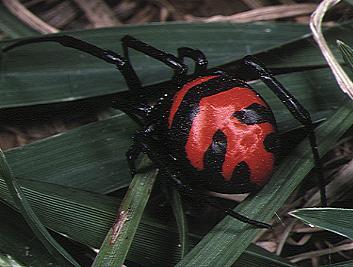
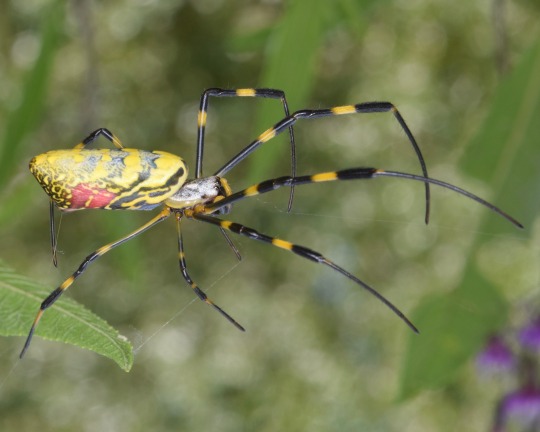
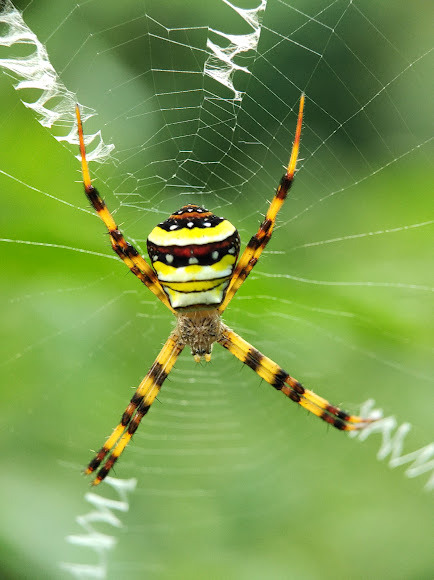

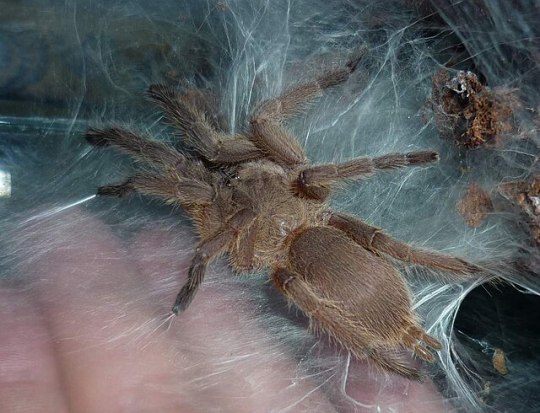
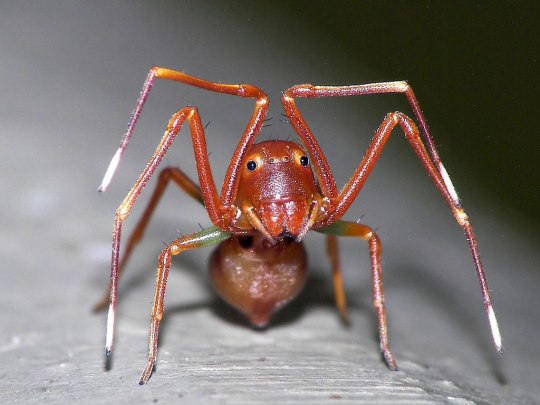
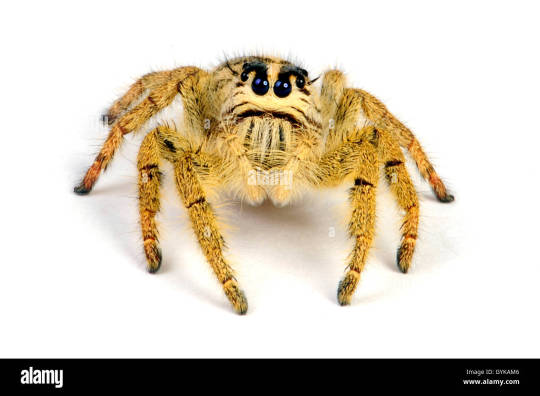
The HiB gang encounter these fine gals and immediately are on edge about having Liuer or Fa Ming near them (cus demons + monks = bad), only for the seven arachnid demons to crowd around the kids and coo;
Spider Sisters: (*pinching Liuer's cheeks and fussing over him*) Spider Sisters: "Oh he's so short!" "Barely a hatching!" "And he's so chubby, look at these cheeks!" "He's so cute I could eat him up!" Liuer, terrifed cus of what the adults warned him about: "Dasheng! They're gonna eat me!" (;﹏;) Spider Sisters: (*immediately give him more space and make sad aw-ing sounds*) Spider Sisters: "Oh no sweetheart!" "We don't want to eat eat you!" Spider Sister #4, joking: "Yeah, you're not ripe enough." Liuer, sarcasm failed: "....WAAAAHHH!!!" 。・゚゚・(>д<)・゚゚・。 Other 6 Sisters: (*disapproving glares at #4*)
Because an aspect of the Sisters from JTTW thats often glossed over; is that they are described as the adoptive mothers to seven baby bug demons.

These broody spiders take one look at Liuer and Silly Girl and start cooing at how much they want one of their own. <3
After the confusion is cleared up with the HiB gang, they quickly gain some new friends in the form of seven giant spider demons. The eldest three sisters do flirt with Fa Ming though - so the monkeys gotta keep on eye on that. And the fourth one has a crush on Sha Wujing. The only one of the demons that show any interest in Zhu Bajie is the youngest jumping spider having a bit of a puppy-crush on him, and that rightfully freaks him out a little too much.
#spiders tw#monkey king hero is back#hib au#hib jiang liuer#spider demons#jttw#jttw inspo characters#journey the west
27 notes
·
View notes
Text
Real life animal facts for your next DnD creature encounter:
Eels are able to slither over shore rocks and land just like snakes. Crabs are able to jump Spiders are fast, at any size... Poison dart frog species get their poison from their diet of bugs, so in fantasy settings consider giving your froggies a few too many hallucinogenic ant treats, or even acidic bombardier beetles. Mussels love forming around brine pools due to the natural dead creatures within the pool, that eventually degrade and get swept towards their mouths by ocean flow. If a body of water has been deadly for a long time, consider adding Mussels or other such Mollusks around the edge. Cats, big and small, attempt to mimic the sounds of other creatures they wish to hunt, in DnD some may be a bit too good for the player's liking...
Mimics Mimic. That is the only rule. Every creature on earth has some stimuli that will confuse it, and there are many animals, predator and prey, that use it to their advantage. Your players confusing stimuli is Dice Rolls. The Nothic is a great example of this confusion before your players detect one. Most animals have a danger call or sense when something like a predator is nearby. There is no reason that goblins, kobolds, Kenkus, Aarakocras, and other such animal-ish races would not have one in their language as well. The same applies to druids, lycanthropes, and certain players with spiritual connections.
Make sure your druid with a deer headdress doesn't get mixed up in deer territory during mating season, lest they have to clash antlers with the stag that angrily huffed at them from the woods line.
Have fun~
3 notes
·
View notes
Text
Spider Life List
Got this idea from birders. I'm not exactly the type of person to 'collect' observations and find rarities or ID everything I stumble upon (I can't remember names with my crap memory lol). I'm more of a behavior watcher, and the reason why I watch spiders is because watching them do stuff is fun, like how they get their food/hunt.
So yeah this is my personal list of spiders I like to see/ watch certain behaviors from.
Orb weavers (not that they aren't common, I just don't have a photo of one yet) - especially those with huge webs
Ant/scorpion mimics (or any mimics in general) - they move differently from other spiders. There's more than one ant mimicking spider in my country (one crab and two jumpers), so I'm keeping an eye out for imposters! There's even a snake (head) mimicking spider. There are a couple that apparently look and smell like bird droppings, but I'm kind of hesitant to search for these (for obvious reasons).
'Social' spiders - a few species of spiders live in colonies, have huge webs and have 'social' behaviors like raising young. There's at least 1 research paper in my country of a species that sort of acts 'social' and live in groups, so I'd be stoked to see them.
Trapdoor spiders - hard to encounter and find, but that's why they're on a life list! I'd like to see this one hunt (if possible)
Fishing spiders - what it literally says. Spiders that dive into water and fish! Found in mangroves and wetlands.
Crab spiders - I want to see them ambush prey!!! They are pretty common, but I haven't seen them hunt. They walk weirdly for spiders tbh.
Yellow sac spider/ Brown recluse/ Black widow... from a very safe distance - they're nocturnal. Sac spiders and brown recluse hunt (which is pretty cool) and black widows use their webs. Honestly, I'd just take a picture and leave immediately. I'm more worried about squishing it by accident lol (most spiders attack when squished/ threatened, but generally keep to themselves).
Might add more, but this is enough for now
3 notes
·
View notes
Note
What are your top 5 animals?
ofc compiling a list is hard, since it's also quite dynamic! but imma try anyways. 1) Mimic Octopus I cannot get over how fucking cool this guy is, I love octopuses in general so much, but this guy takes the cake. I love mimesis so much and i love creatures that take it to its fullest possible extent. I've loved these for a very long time. 2) Armored shrew I've only discovered this species recently, as i was going through the wiki pages of all soicomorphs, and honestly, underrated. Insane spinal cord, i cannot lie I am jealous. This place may be taken up by other animals in the future but rn it's living in my head rent free. 3) Mexican mole lizard cutest weirdest reptile imo, also i cannot get over the fact that it only has 2 front legs, i've also loved this guy for a very long time. 4) Dragonflies I don't have a favorite species of dragonfly, but i rly can't expect to when i'm dealing w insects. Absolutely badass creatures, insane flight, insanely good hunters, big stupid eyes, just awesome. 5) Superb lyrebirds I wanted to at least include 1 bird, and this is def my favorite! I like it for the same reason i like mimic octopuses, mimesis! but with sounds!! stellar. Also i feel bad leaving out naked mole rats, axolotls (as a kid i was rly obsessed w them), star nosed moles, any nudibranchs, any crabs (in these cases i feel like the variety over all the species is more important to me than any of the species themselves), gerridae, eels, goblin sharks, portuguese man o' wars, stick insects, sun bears, golden snub-nosed monkeys, pangolins, armadillos, kangaroos , black widows, trapdoor spiders, any ants any bees, but as it turns out, 5 is not a big number. (also i've tried factoring out the bias that comes from the fact i've been looking into the taxonomy of mammals (to get a loose sense) recently)
3 notes
·
View notes
Text
Wyvere Reviews All the Monster Hunter Monsters (Arthropod Monsters)
If you know me, you know arthropods are one of my favorite groups of animals in the world. And of course, they're popular as monsters in media. So of course we have some bug monsters in Monster Hunter! We'll be covering multiple classes today, like we did with the last review.
Neopterons

We're starting off with the Neopterons, a class consisting of insect-like monsters. The first monster of note is Altaroth, an ant monster. I like those little crests on their heads, they kinda remind me of flowers, but what I really love is that they have bellies like honeypot ants! That's a wonderful touch of real world biology, which is always something I love with fictional monsters! 7/10
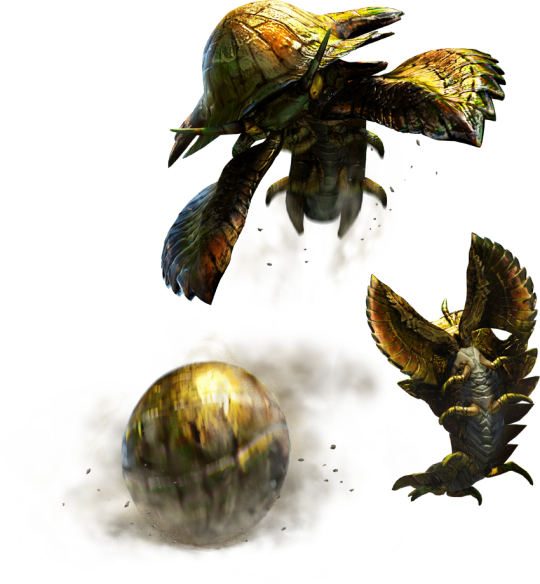
Tbh, the Konchu feels like they should belong in the Carapaceon class, seeing as how they have more similarities to crustaceans, especially pillbugs. Still pretty cool, 7/10.

The first of the big bug monsters is the Seltas Queen, who is obviously a bug queen. She's got traits of beetles and scorpions, but... kinda comes across as a sort of generic "bug queen" type monster? Idk what exactly it is, but I just don't enjoy the design too much. The tail is cool, at least. 6/10
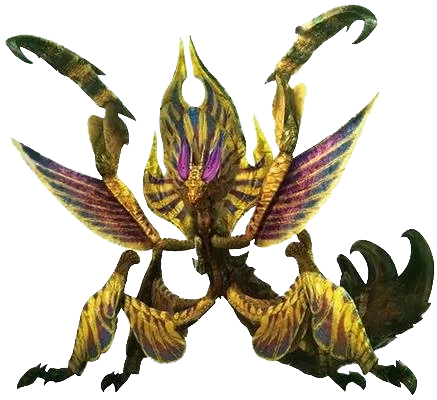
Ahtal-Ka is a LOT cooler, and not just because they're a praying mantis with an Egyptian motif (though that is part of the appeal, of course). You see, they can create motherfucking mechas.

I AM NOT JOKING. LOOK AT THIS. IT IS CANON IN MONSTER HUNTER THAT THERE IS A SPECIES OF GIANT MANTIS INTELLIGENT ENOUGH TO CRAFT GIANT MECHAS MADE OF SILK AND STONE, AND ALSO CONTROL THESE MECHAS FOR COMBAT. THIS OPENS SO MANY STORY POSSIBILITIES BUT FOR SOME REASON THEY ONLY APPEARED IN ONE GAME AND NEVER AGAIN. 8.5/10
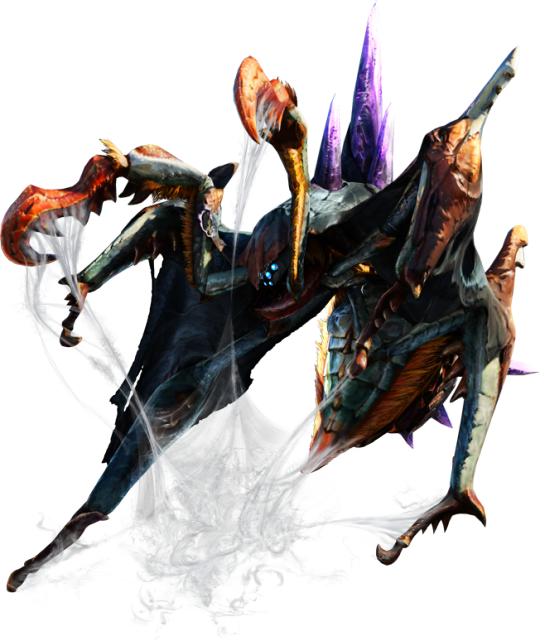
Okay okay, I need to cool off from the mecha-making-mantis, and talk about another cool bug monster. The Temnocerans are supposed to be spiders, but Nerscylla here has six legs, which clearly means they're an insect! But they are still a cool bug monster, made more interesting due to the fact that they wear the skins of their prey. Creepy, yes, but the Hunters are guilty of that too. Also, I love spiders, even if this is a spider mimic instead of a true spider. 8/10


I know I've made the unofficial rule to not talk about the smaller monsters, but the Rachnoid and Pyrantula are just so cute, and also I like how Pyrantula looks like a little pumpkin! 7.5/10

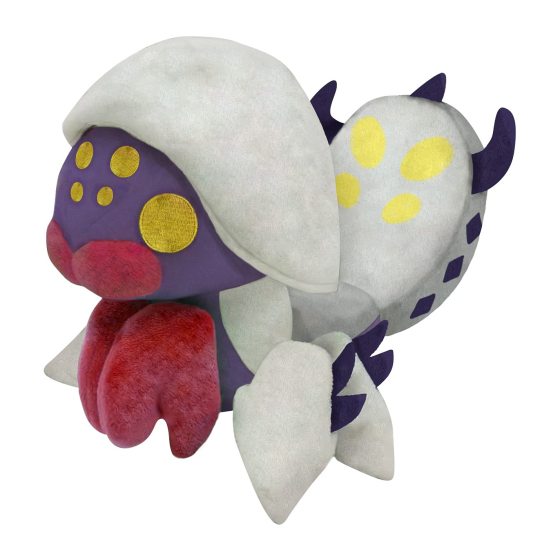
I got a picture of Rakna-Kadaki's plush because it's kinda hard to read the features on the official render. Plus the plush is cute (actually the Monster Hunter plushies are cute in general, go look them up). Anyway, Rakna-Kadaki is a pretty cool monster too, with how they've wrapped themselves in silk and take inspiration from the Jorogumo of Japanese myth! 8/10
Carapaceons

Time for crab! Carapaceons are crustacean monsters, with most of them being specifically hermit crab monsters. Also, they have a habit of collecting monster bones, often to act as shells, which is pretty damn cool. The Ceanataur is a pretty good crab, I like their scythe-esque claws. 7.5/10

Shen Gaoren has some long legs almost like a spider crab, and also a nice coconut crab face. 7.5/10

I think my favorite of the crabs, though, would be Hermitaur. Like real world hermit crabs, they wear armor to protect their sensitive skin, but instead of shells, Hermitaur wears monster skulls! They also have a very spooky and badass face to go along with their creepy defense mechanism! 8/10
Bonus Flying Wyverns
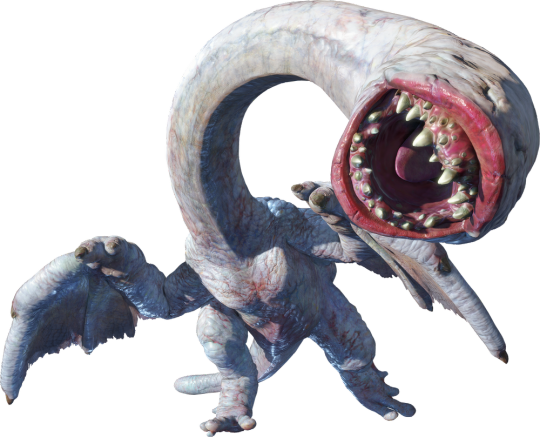
In order to pad this review out and also get rid of the need to review even more monsters with the Flying Wyvern post, we're using some of the monsters of that class who are distinctly more similar to invertebrates. We're starting this bonus round with Khezu, and... well, they sure are a weird cave monster. They sure are creepy and offputting to look at, and that goal was definitely achieved. 5/10, they are a good design, but one that makes me deeply uncomfortable.
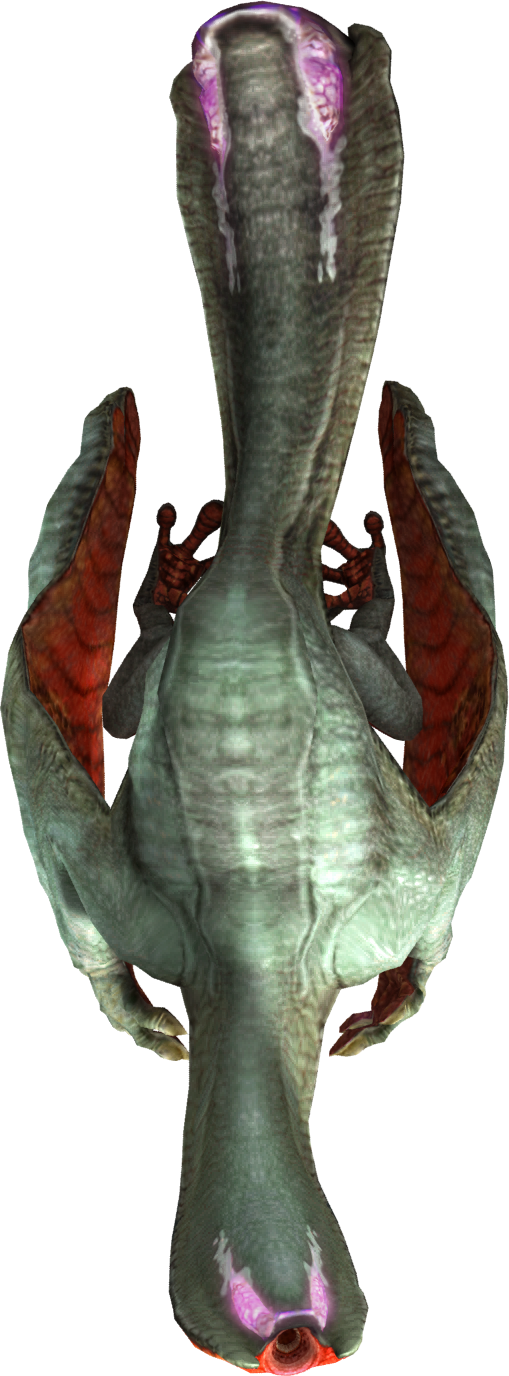
Gigginox, at least, is much easier on the eyes. They're more weird than overtly creepy, and they also feel more like a leech monster than Khezu. 7.5/10

Fortunately, we end on what is possibly one of my favorite monsters in the series! Astalos is a freaking beetle dragon, which I obviously adore, and merges those aspects absolutely wonderfully! They're such a gorgeous monster, and a perfect note to end this post on! 9/10!
#wyvere rambles#monster hunter#wyvere reviews monster hunter#bugs#spiders#ask to tag#that last one is for khezu and gigginox specifically
3 notes
·
View notes
Text



I realized I never posted the full Invertober art pages, so here they are!
References used (for the more heavily referenced ones):
Lanternfly
Malachite
Wasp
Goliath beetle
Bumblebee
[Image description: Three art pages with drawings of various invertebrates. Each animal has its common name written above and its full taxonomic classification (sans kingdom) written below. Most of them are shown from above unless otherwise specified.
Image 1 has a light blue background and twelve species:
A peanut-headed lanternfly, a light brown insect with a roughly peanut-shaped head.
A malachite, a butterfly with brown and pale green wings, sitting facing right on top of malachite rock.
A common cuttlefish, white with brown stripes, shown facing right.
A fried-egg jellyfish, a jellyfish with a bell resembling a sunny-side-up egg. A few of its thick tentacles are curled up at the tips, revealing blue and yellow bumps on their undersides.
A greater bee fly, a fly evolved to mimic a bee. It is covered in dark yellow and brown fuzz.
A Mexican redknee tarantula. It is black and orange (despite the name).
A ruby-tailed wasp. It has a blue head and thorax, a pink abdomen, and brown wings.
A hammerhead worm. It is mostly bright orange with a semicircular black head and a black-bordered white stripe going down its back.
An anthropomorphized dinosaur ant, a light brown ant with long mandibles. She is wearing a green onesie with a dinosaur on it and sitting with her knees bent and her upper right hand resting over her lower right hand.
A magnificent sea anemone, a wide anemone with a bright pink body and green tentacles.
A goliath beetle. It is black and white with brown elytra.
A Japanese spider crab, a red-and-white crab with very long and thin front limbs.
Image 2 has a light green background and twelve species:
An early bumblebee. It is yellow and black with the back of the abdomen being orange.
A redwood sideband snail. Its body is dark brown, and its shell is dark purple on the outside gradienting to yellow in the middle.
A comet moth. Its wings are a light yellow-green with a brown eyespot on each one and two long “tails” coming off the hind wings. Its body is yellow, and its antennae are brown and very fluffy.
A yellow-spotted isopod, dark grey with yellow spots.
A wingless dragon based on a female European glowworm. It has pale pink skin and dark brown horns and plating along the back. Bright yellow-green light radiates from the tips of its horns and tail in star shapes.
An Anna’s magnificent sea slug, a blue-and-black nudibranch with orange gills and antennae and an orange-and-white frill around its body.
A yellow tube sponge. It looks exactly the way its name implies.
A three-banded lady beetle, a ladybug with five rectangular spots (two pairs on the outer edges of the body, one band across the middle).
A strawberry squid swimming with its body tilted to the right. It is dark pink, and one of its bright green eyes is noticeably larger than the other.
A Linne’s cicada, green with darker green markings, sitting with its wings folded.
An orange-legged dronefly sitting facing right. It has a yellow head and thorax, orange abdomen, light pink wings, and dark brown legs with orange feet.
A giant Asian mantis standing facing right, only the front of the body shown. It is light green with light yellow eyes.
Image 3 has a light yellow-orange background with seven species:
An Indo-Pacific horseshoe crab. It is a light greenish grey.
An ivory millipede, a black-and-white millipede, walking to the left with its body curved into an S shape.
A yeti crab, a greyish pink crab with thick white fur around its pincers.
A wavy-lined emerald moth, a light green moth with white line markings on the wings.
An anthropomorphized bold jumping spider shown from the waist up. They are dark grey with four black eyes, six arms, and a handful of hairs sticking up around their head, and are wearing a bright green tank top. They’re waving with their upper left hand.
A Johnson’s sea cucumber, red-orange with white “spikes” and tube feet, shown from the side.
A Halloween crab, a black and red crab with purple and light blue front limbs / pincers. It is standing facing the viewer. There are thick yellow markings over its eyes that make it look like it’s doing a pleading face.
End ID.]
#original art#animals#sponges#crustaceans#insects#arachnids#millipedes#cephalopods#gastropods#demosponges#sea cucumbers#spider#spiders#lanternfly#butterfly#moth#wasp#ant#bee#mantis#cicada#crab#isopod#horseshoe crab#cuttlefish#squid#ladybug#anthro#dragon#beetle
1 note
·
View note
Photo

This crab spider, Amyciaea, mimics Oecophylla smaragdina (weaver ants). It has two spots on its back to mimic eyes, and uses the hindlegs as fake antennae. It dangles from a silk thread to evade the ants, and then comes down and bites one in the neck to paralyze and eat it.
It took me a while to realize this is not just one ant :D

0 notes
Text
@watcherscrown submitted: some bugs from this week!

freshly peeled ladybug larva


some red admirals having a lunch date

a gorgeous beetle
and finally, the only friends I want help IDing




this crab spider and ant mimic!! (all bugs from Chicago except the spiders, which are from NW Missouri)
Lots of good friends!! Love the beetle. The first spidie looks like a ground crab spider in the genus Xysticus. Maybe Xysticus texanus? Not sure if the markings quite match up. The spider looks like some kind of ground spider but I can't really tell which one from those photos!
#animals#insects#bugs#spider#arachnids#submission#ground spider#ground crab spider#larva#ladybug#lady beetle#beetle#butterfly#red admiral#scarab beetle#grapevine beetle#long post
70 notes
·
View notes
Video
Turtle ant mimic crab spider, Bucranium sp. by Andreas Kay Via Flickr: from Ecuador: www.youtube.com/AndreasKay
#Amazon#Andreas Kay#Arachnida#Bucranium sp.#crab spider#Ecuador#focus stack#Pastaza#rainforest#spider#Thomisidae#Turtle ant mimic crab spider
29 notes
·
View notes
Text

Aphantochilus rogersi, an ant-mimicking crab spider from Bolivia, having killed one of the Cephalotes atratus ants that it was mimicking. If it weren't for the extra legs, I'm not sure I would have realized this was a spider!
Everyone wants to be an ant.

Read more here: https://twitter.com/7StellarJays/status/1530965605318262784

Read More: https://twitter.com/Myrmecos/status/1223977145057366018

2K notes
·
View notes
Text
This is a project I’ve been crafting for a while through my re-run of everything english dubbed Octonauts. A brand new A-Z list of EVERY SINGLE CREATURE THE OCTONAUTS HAVE EVER MET:
*Vegimalese*
What’s that Tunip, you and the Vegimals want to learn about even more creatures?
*Vegimalese*
Well, let’s go again!
The Octocomputer will show you all the creatures the Octonauts, and Octo Agents, have met, on both land and sea!
Cheepa Cheepa!
Anaconda 1
Albatross 2
Anemones 3
Angler Fish 4
Arapaima 5
Adele Penguins 6
Alligator 7
Amano Shrimp 8
Anteater 9
Arabian Camels 10
Armadillo 11
Bowhead Whale 12
Barracudas 13
Beluga Whales 14
Black Caiman 15
Blobfish 16
Blue Whale 17
Blue-head Wrasse… 18
Bottle Nose Dolphins 19
Bat 20
Baboons 21
Barnacle Goose 22
Bear 23
Black Giant Squirrel 24
Black Winged Stilt Bird 25
Blind Shrimp 26
Burmese Python 27
Brittle Stars 27
Bombardier Beetle 28 and
Bomber Worms 29
Capybara 30
Carrier Crab 31
Catfish 32
Conocono Crab 33
Conocono Crab?
Coconut Octopus! 34
Colossal Squid 35
Comb Tooth Blenny 36
Cone Snail 37
Cookie Cutter Shark 38
Cuttlefish 39
Convict Fish 40
Caiman 41
Caterpillar 42
Cave Fish 43
Cave Shrimp 44
Chameleon 45
Clam 45
Chinstrap Penguins 46
Chinese Mitten Crab 47
Christmas Tree Worms 48
Coelacanth 49
Coral Polyp 50
Coral Snake 51
Crawfish 52
Crocodile 53
Crow 54
Crown of Thorns Starfish 55
Dormice 56
Deer 57
Damselfish 58
Dogfish 59
Decorator Crab 60
Duck-Bill Platypus 61
Dwarf Lantern Shark 62
Eel 63
Electric Eel 64
Elephant 65 and Elephant Seal66
Elk 67
Egyptian Vulture 68
Emperor Penguin 69
Fiddler Crab 70
Frogfish 71
Fire Ants 72
Flamingoes 73
Flying Fish 74
Flying Fox 75
Fruit Bats 76
Giant Clam 77
Giant Comb Jelly 78
Giant Isopod 79
Giant Spider Crab 80
Giant Squid 81
Giant Grass Carp 82
Giant Pacific Octopus 83
Giant Panda 84
Giant Weta 85
Golden Coral 86
Golden Mole 87
Giraffe 88
Garden Eel 88
Gray Whale 89
Grey Reef Shark 90
Grouper 91
Guard Crab 92
Gull 93
Great White Shark 94
Gulper Eel 95
Hammerhead Shark 96
And Harbor Seal 97
(Inhale hoo inhale hoo)
Harlequin Duck 98
Harpy Eagle 99
Hippos 100
Hoatzin 101
Honey Badger 102
Hornbill 103
Hourglass Dolphins 104
Howler Monkeys 105
Hyenas 106
Hermit Crab 107
Humpback Whale 108
Humphead Parrotfish 109
(Slower) Humu-humu-nuku-nuku-a-pua-a! Haha! 110
Ice worms 111
Iguanas 112
Indochinese Tiger 113
Immortal Jellyfish, 114
Jellyfish 115
Jaguar 116
Jawfish, 117
Kangaroos 118
Kea Parrots 119
Kelp, Fish 120
Leatherback Sea-Turtle 121
Loggerhead Sea-Turtle 122
Lemon Shark 123
Longfin Eels 124
Leopard 125
Lions 126
Lion Fish 127
Lions Mane Jellyfish 128
Long Arm Squid… 129
Leafy Sea Dragon 130
Mangrove crabs 131
Mantis Shrimp 132
Martens 133
Microbe 134
Monarch Butterfly 135
Mound coral 136
Mountain Goats 137
Mud Skipper 138
Moray Eel 139
Mimic Octo-Pus! 140
Marine Iguanas 141
Manta Ray 142
Mana (Mana?) Mana (Mana?) pause. Manatee…! (Clears throat)3
Narwhal 144
Needlefish 145
Nile crocodile 146
Nile monitor lizards 147
Nine banded armadillo 148
Nutria 149
Okapis 150
Omuras whale 151
Orca 152
Oarfish 153
Octopus 154
Prowfish 155
Pelicans 156
Polar Bear 157
Pilot Fish 158
Parrotfish 159
Piranhas 160
Porcupine Puffer 161
Porcupine 162
Puffin 163
Pangolin 164
Pikas 165
Pin-tailed whydahs 166
Poison dart frog 167
Pygmy 3 toed sloths 168
Quino checkerspot butterflies 169
Queens-land-Lung-fish 170
RedRock Crabs 171
Reef Lobsters 172
Remipedes 173
Remora Fish 174
Rainbow blanket octopus 175
Rats 176
Raven 177
Red deer 178
Red eye tree frogs 179
Red fox 180
River Dolphin 181
Rock climbing gobies 182
Ruffed grouse 183
Sand grouse 184
Sand viper 185
Screaming piha 186
Seals 187
Sehuencas water frogs 188
Squid 188
Skinks 189
Skua bird 190
Skull Spiders 191
Snail 192
Spinner dolphins 193
Suckermouth catfish 194
Sun bear 195
Sunflower Star 195
Sunfish 196
Surfing Snail 197
Sailfish 198
Sardines 199
Salt-water croc-o-dile 200
Sea gulls 201
Sea squirts 202
Sea tulips 203
Sea Otter 204
Sea Pig 205
Sea Skater 206
Sea Snail 207
Sea Snake 208
Sea Sponge 209
Sea Urchin 210
Sea Horses 211
Siphonophore 212
Slime Eel 213
Snapping Shrimp 214
Sperm Whale 215
Spook Fish 216
Sea Star 217
Surgeon Fish 218
Swordfish 219
Shovel Nosed-Guitar Fish 220
Swell (sigh) Shark (sigh) 221
Snot Sea (panicked) Cucumber! 222
Tiger shark 223
Tokay Geko 224
Toucan 225
Tree frogs 226
Tree lobsters 227
Tree snails 228
Trout 229
Turtles 230
Tulum cave remipede 231
Tube Worms 232
Triggerfish 233
Tor-pedo Ray…! 234
U: You? Me? Me? You? V!
Vampire Squid 235
Vent Shrimp 236
Vole 237
Watchman goby 238
Water dikkops 239
Weasel 240
Wisent 241
Wolves 242
Wood louse 243
Wolf Eel 244
Whale Shark 245
Walrus 246
Water Bears 247
Weddell Seal 248
Whale Louse 249
White-Tip-Shark 250
X: Xylophone solo!
Yellow bellied sea snakes 251
Yeti Crab 252
Zebra 253
Zebra fish! 259
Dadadada!
#I’m having the Shellington moment at the end of the first official song where I realize ima have to edit this when season 5 gets English dub#MEOMI AND OCTONAUTS CREATORS:#do your musical thing pls and make this happen#if Keith wickam voiced this I would simply pass away#for 12 years of adeventures!#octonauts aniversay!#octonauts a&b#octonauts#octonauts above and beyond#above and beyond#the numbers are a bit messed up but the final number is 258 creatures
24 notes
·
View notes
Text
spiders that are tolerant of being held: wolves, bold jumpers, ant mimic M. formicaria.
spiders that don’t like being held, to the point of leaping/purposefully dropping out of your hands: cellar spiders, cross weavers, smaller jumpers, other small orbweavers (sometimes these try to kite/balloon which is adorable actually).
spiders that will try to fight you, in some cases running at you full pelt with their arms up from like 2 entire feet away, even though they are tiny and harmless: bark crab spiders.
bitey bastards: yellow sac spiders.
#to be fair. I try not to pick up wolf spiders unless I am wearing gloves. they've never bitten me but one tries to exercise caution#this has been Spiders Hour thank you goodnight
7 notes
·
View notes
Note
Bug ask game: 3, 4, and 5!
3.) Favorite order in insecta
Hymenoptera :-)
4.) Do you have a favorite member within chelicerata?
They aren't bugs by any means but I do very much love horseshoe crabs 😭😭 but of course spiders are my ultimate favorites, some of them including ant mimics and bold jumpers
5.) What species within myriapoda is your favorite?
I think dragon millipedes are really fun! I love a bright pink bug 😊
2 notes
·
View notes